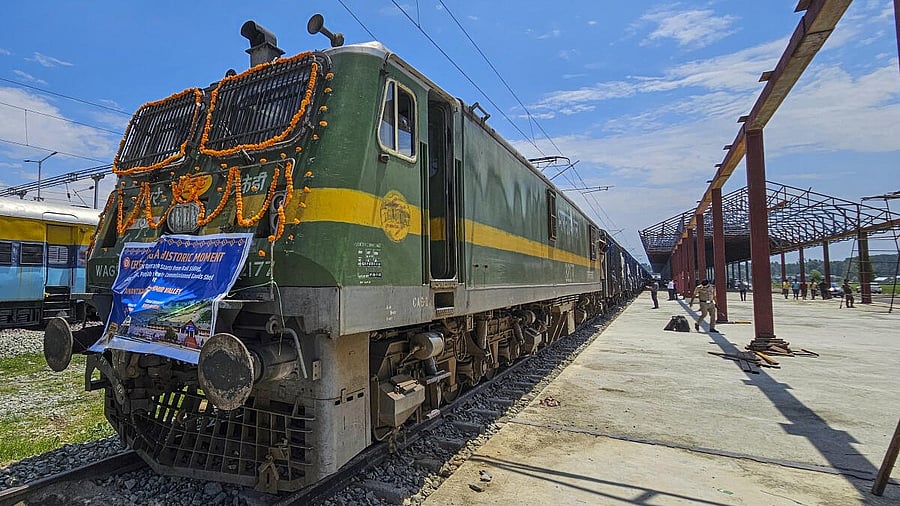
A freight train at Anantnag railway station in Jammu and Kashmir.
Credit: PTI File Photo
Srinagar: Barely two months after freight train services began chugging into the Kashmir Valley, the new rail link is already reshaping local markets — bringing down prices, improving supply chains, and opening the door for national players.
Among the biggest beneficiaries is the construction sector. Cement prices have fallen by ₹30 to ₹35 per bag since the first freight rake crossed the Pir Panjal mountains on August 9, marking a transformative shift in how goods reach the landlocked region.
National cement brands like UltraTech and Ambuja have begun competing directly with local manufacturers, triggering healthy price competition and giving consumers significant relief.
“Earlier, transporting cement from Jammu or Punjab by road would take four to five days and cost nearly double. Now, the same consignment arrives within a day and at a much lower cost,” said a Srinagar-based building material dealer.
The Railway’s entry into the freight segment has drastically cut transportation costs, particularly for bulky commodities like cement, steel, and foodgrains. With freight trains now operating directly to Srinagar’s Budgam terminal, the dependency on road transport through the treacherous Banihal highway has eased.
The arrival of freight services marks another milestone in the decades-long effort to connect the Kashmir Valley with India’s railway network — one of the most challenging infrastructure projects ever undertaken in the Himalayan region.
The Udhampur–Srinagar–Baramulla Rail Link (USBRL) project, conceived in 1984 and declared a “national project” in 2002, aimed to link the Valley to the rest of the country by rail through a series of tunnels and bridges across the Pir Panjal range.
The project faced formidable hurdles — unstable geology, harsh weather and frequent landslides. The most iconic structure on this route, the Chenab Bridge, which stands 359 metres above the riverbed, is the world’s highest railway bridge and a symbol of Indian engineering prowess.
After years of delays, the 272-km rail link has been completed in phases. The Banihal–Baramulla passenger section became operational in 2013, while the 48-km Banihal–Sangaldan section was inaugurated earlier this year, finally connecting the Valley to the national rail grid.
On August 9, 2025, the first freight train carrying cement and essential goods rolled into Kashmir — a moment officials described as a “historic leap for logistics and trade”.
Officials say the freight connectivity will significantly reduce the cost of goods transport to Kashmir, where dependence on trucks and the volatile Srinagar–Jammu highway had long made logistics expensive and uncertain.
“Every bag of cement or quintal of rice reaching by rail will save both time and fuel. We expect a trickle-down effect on other commodities soon,” said a senior official of the Northern Railway.